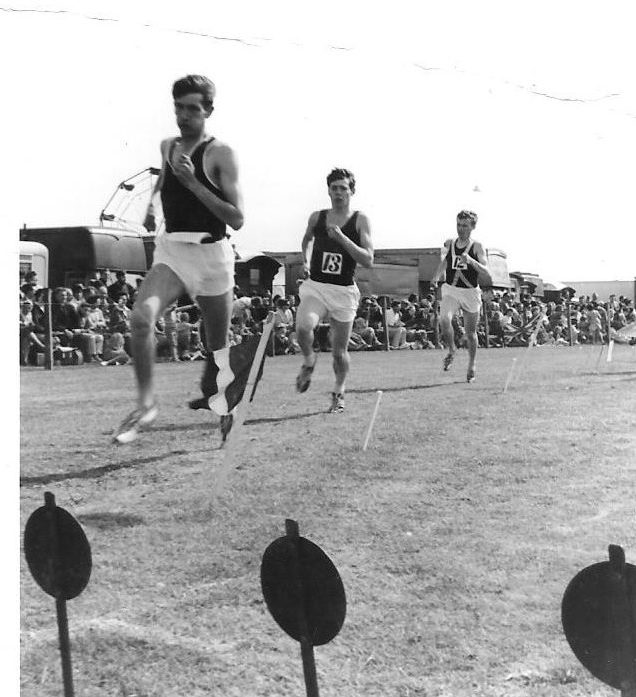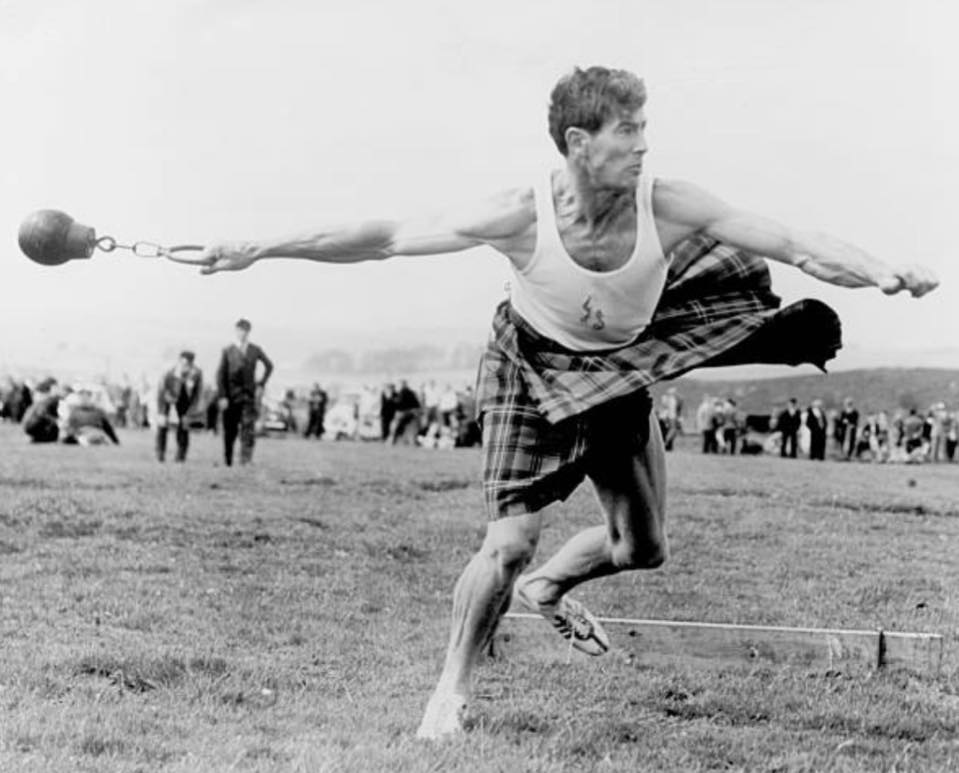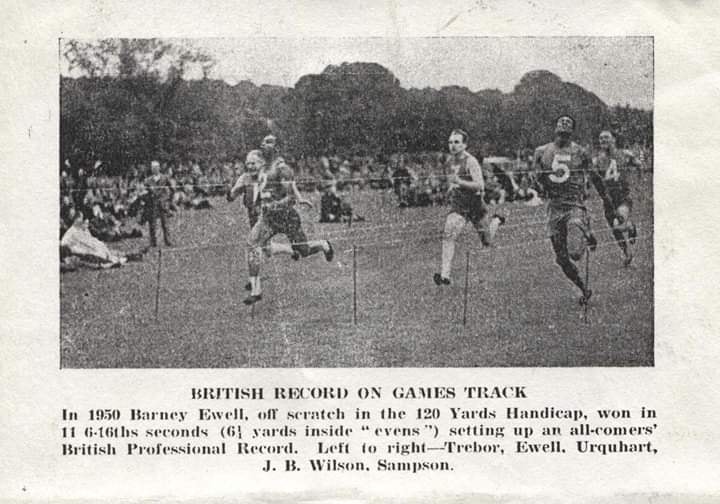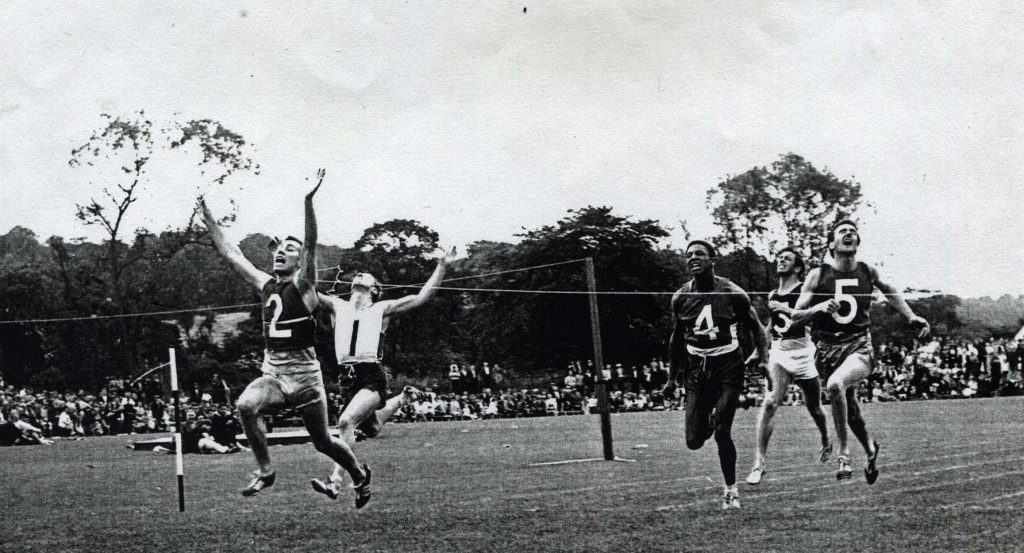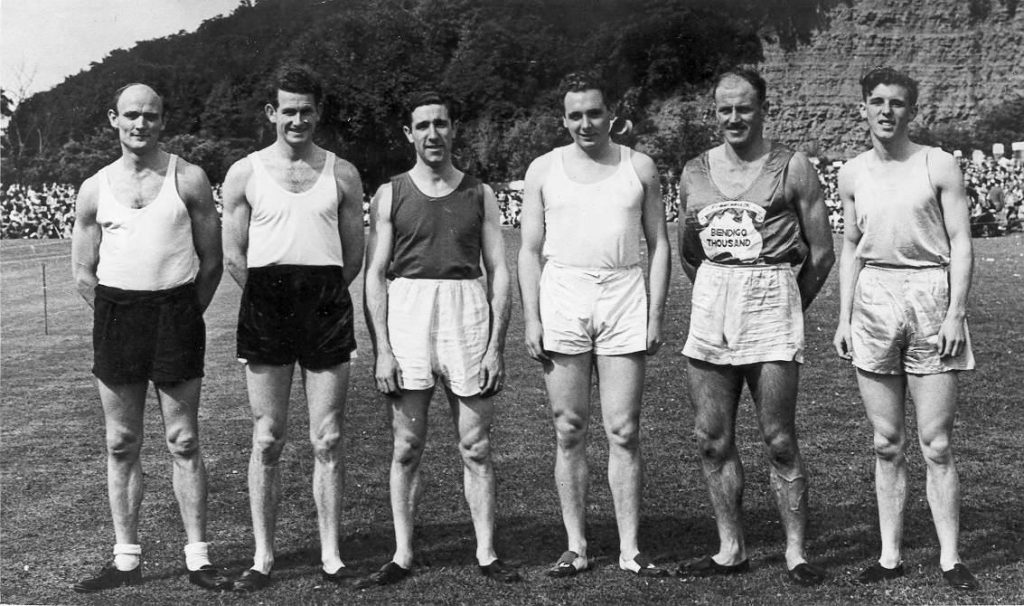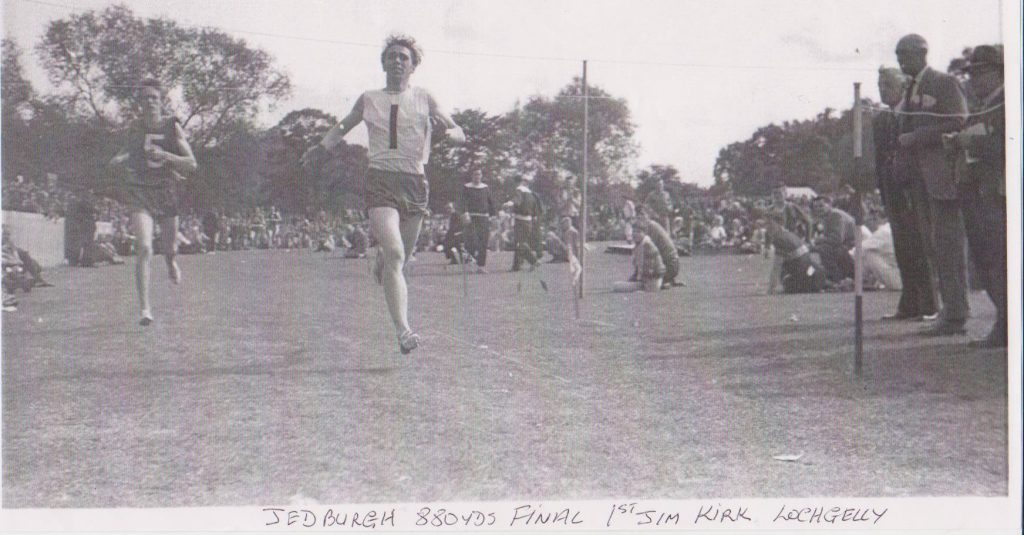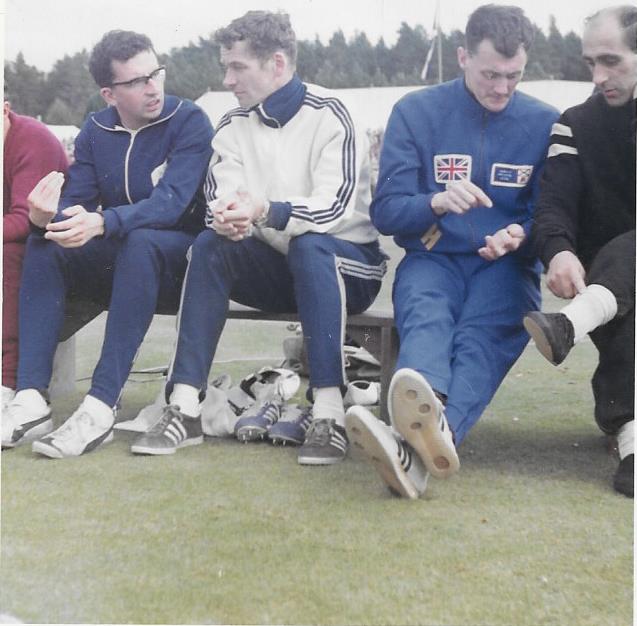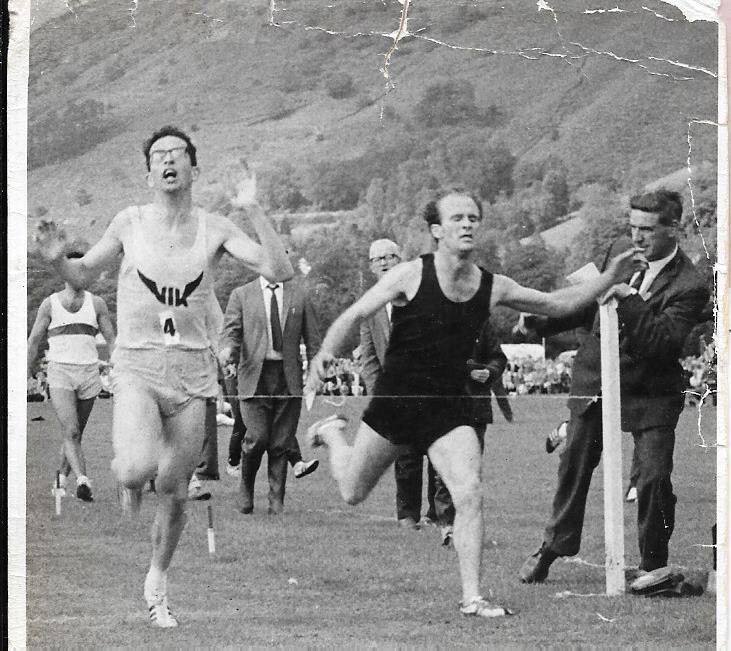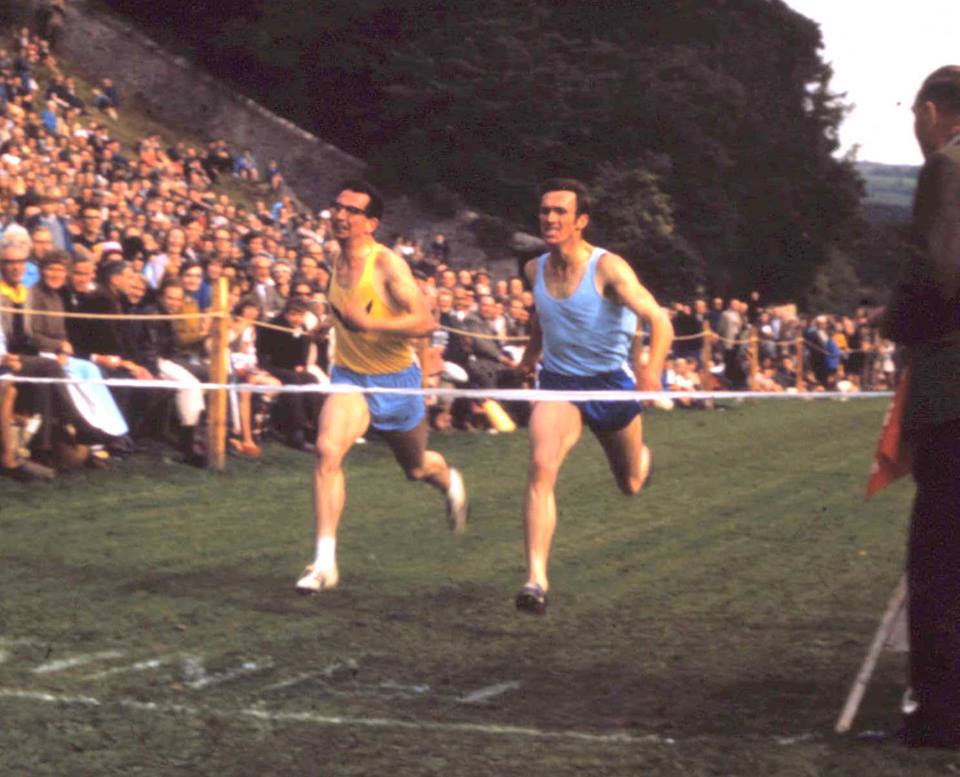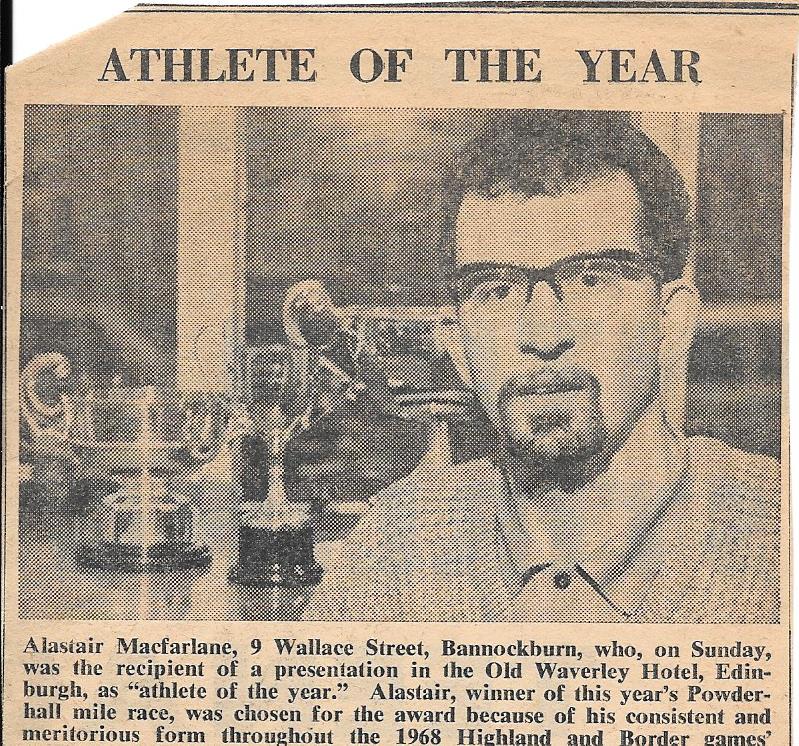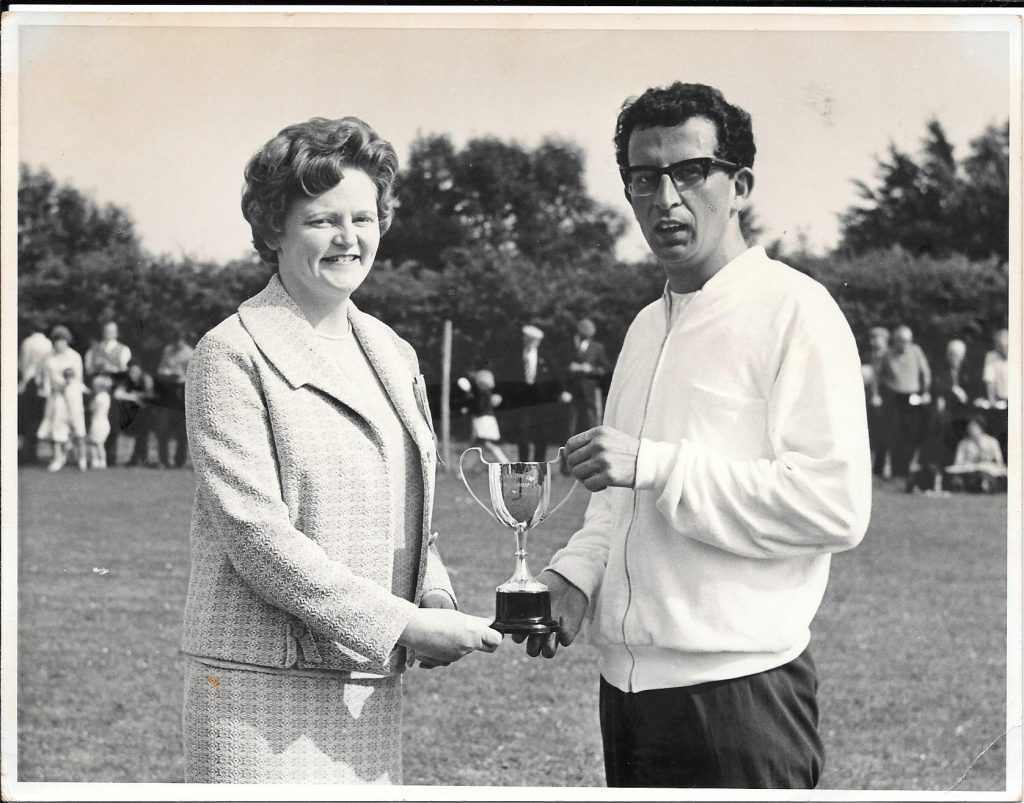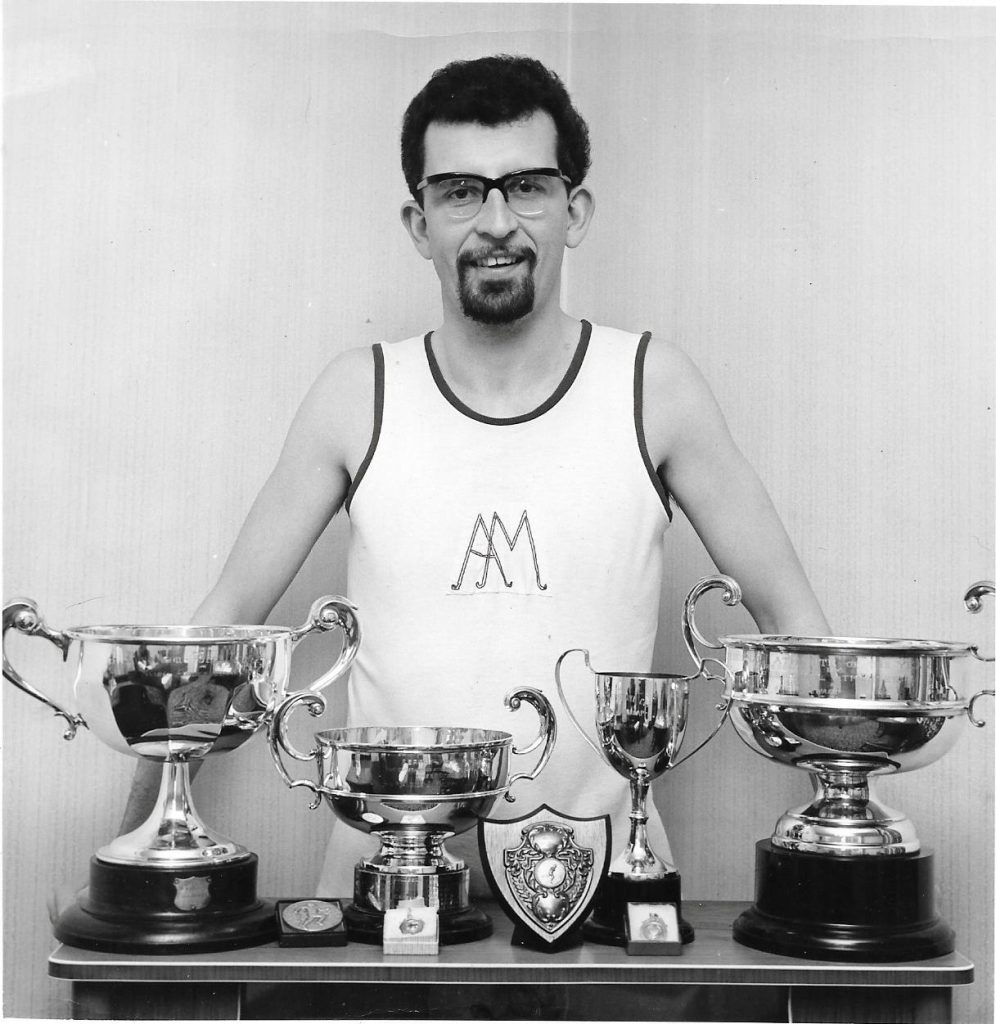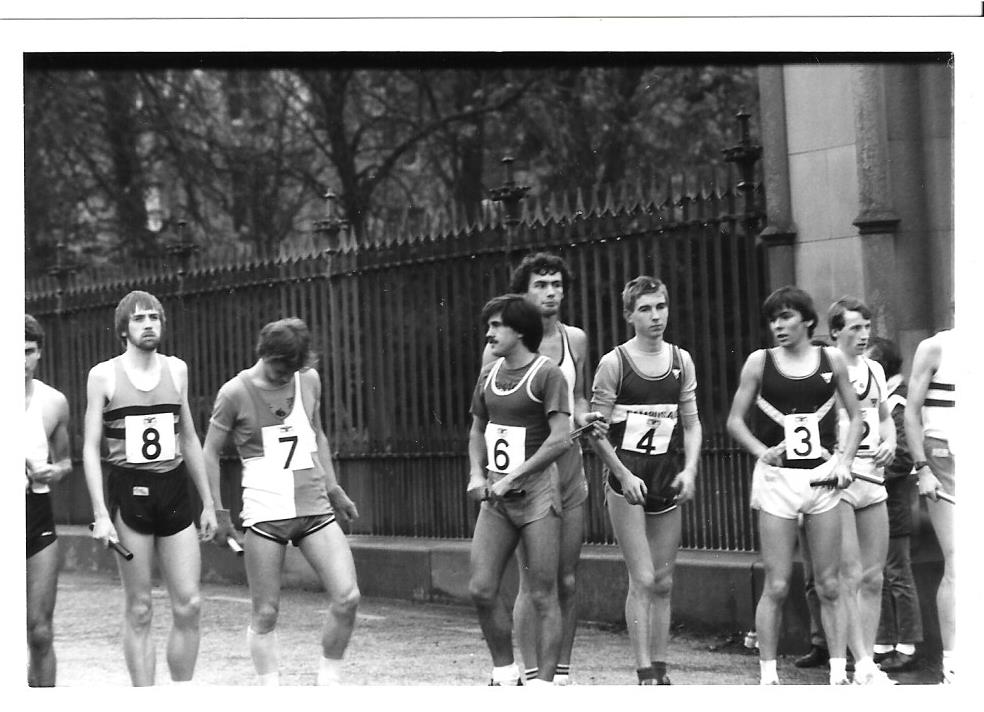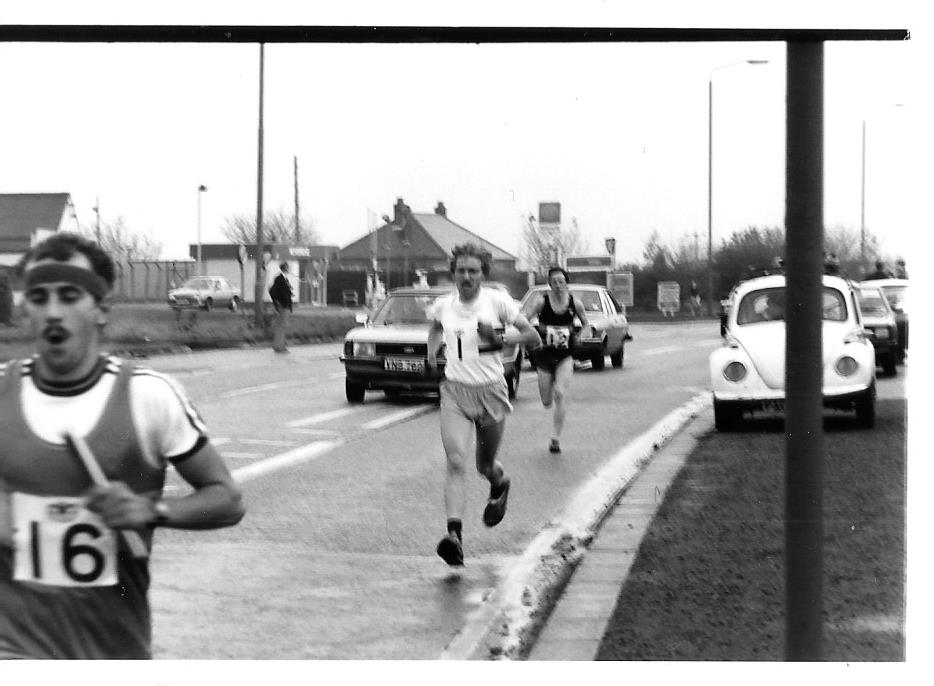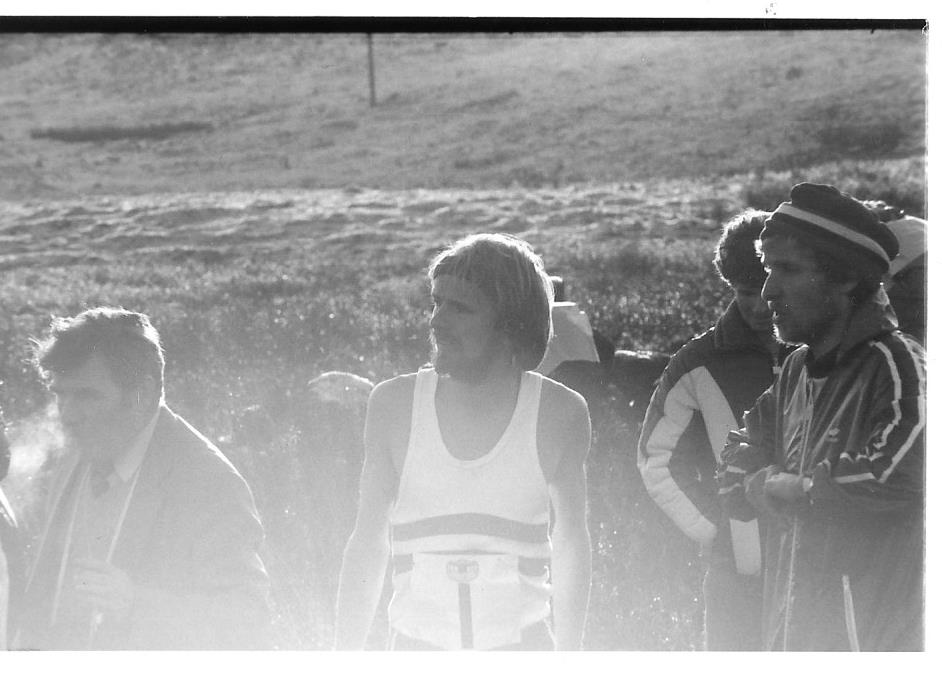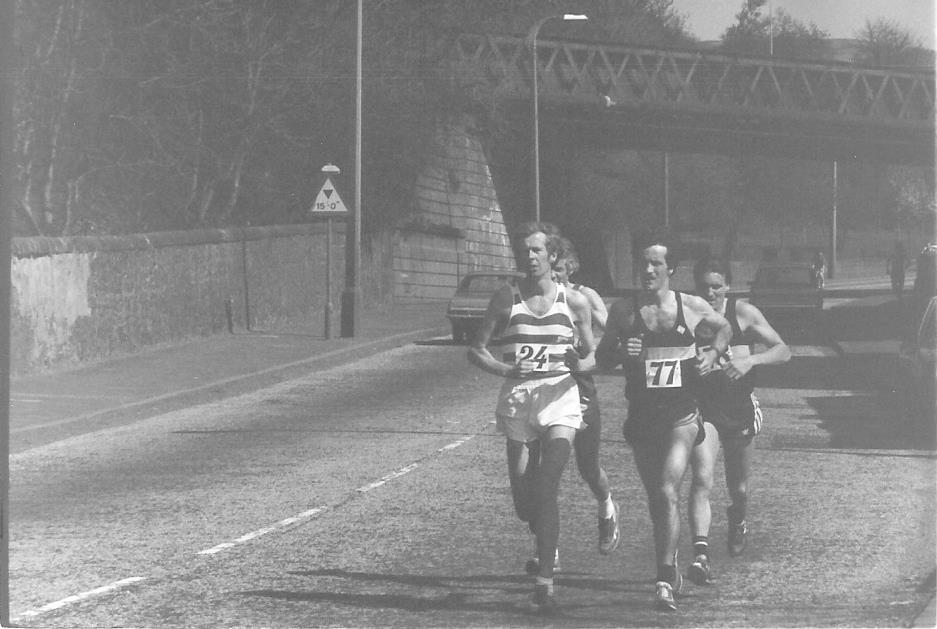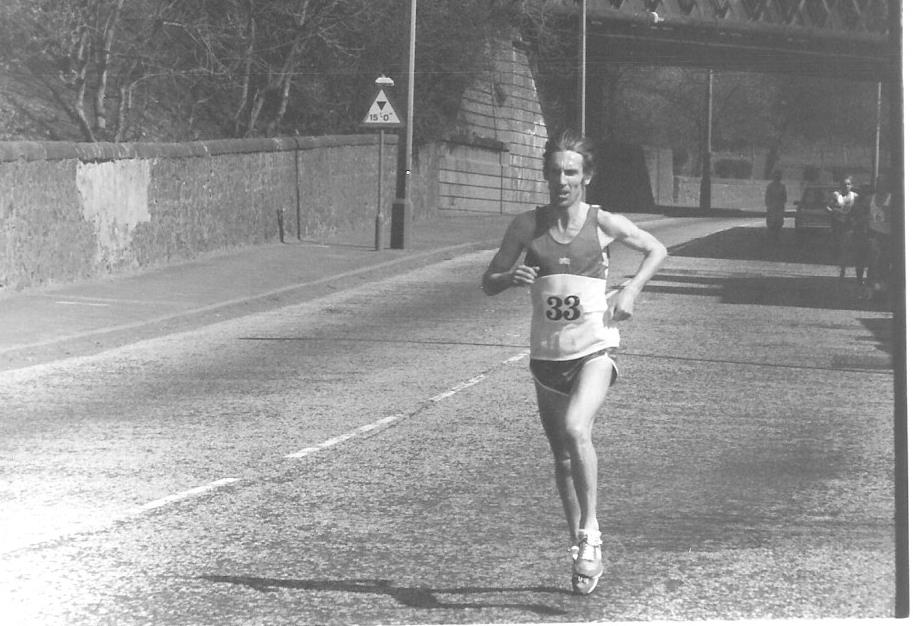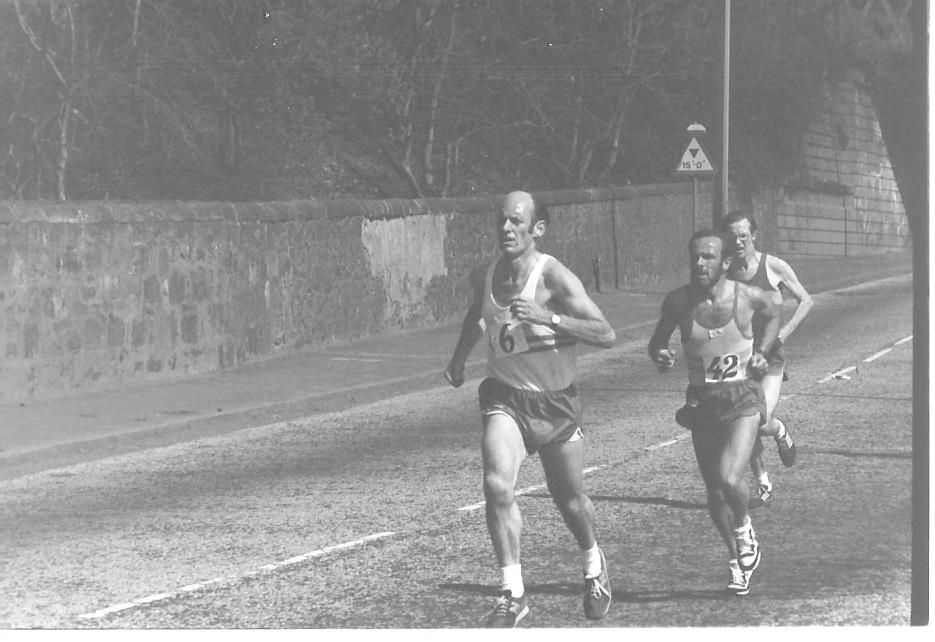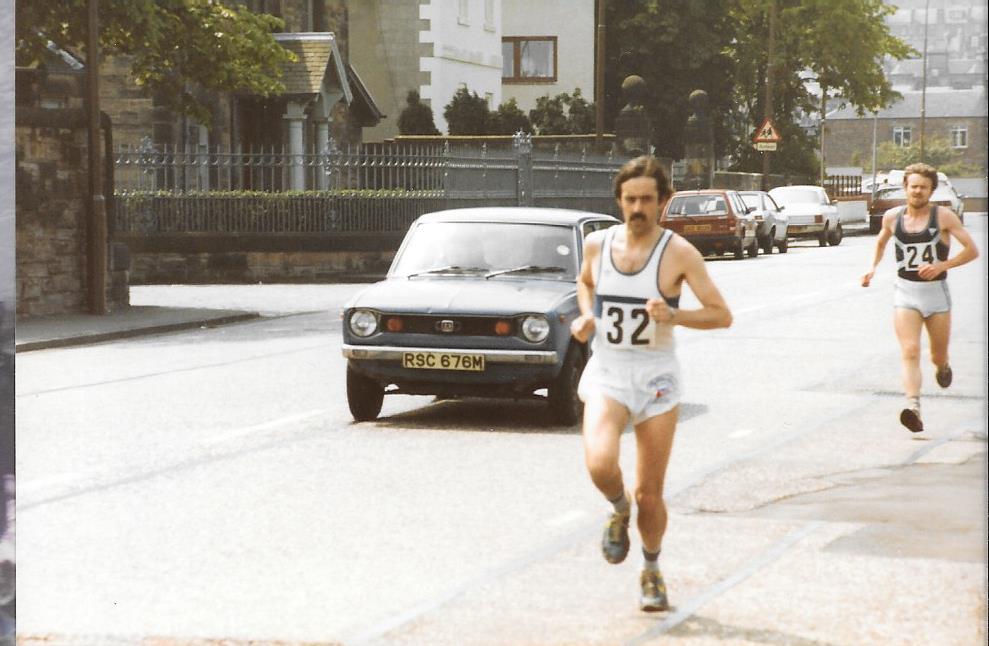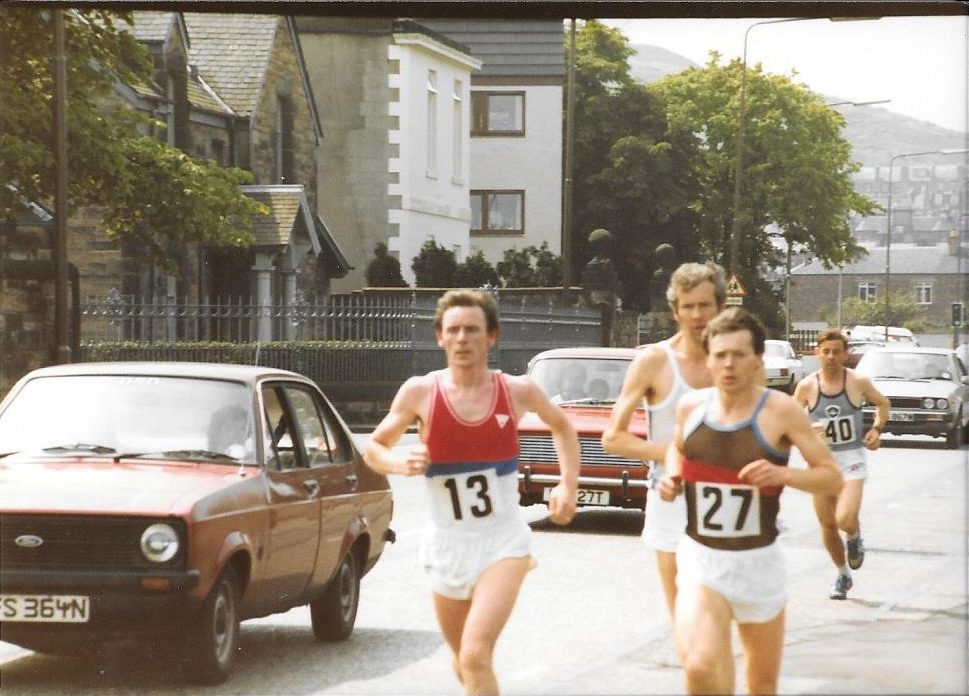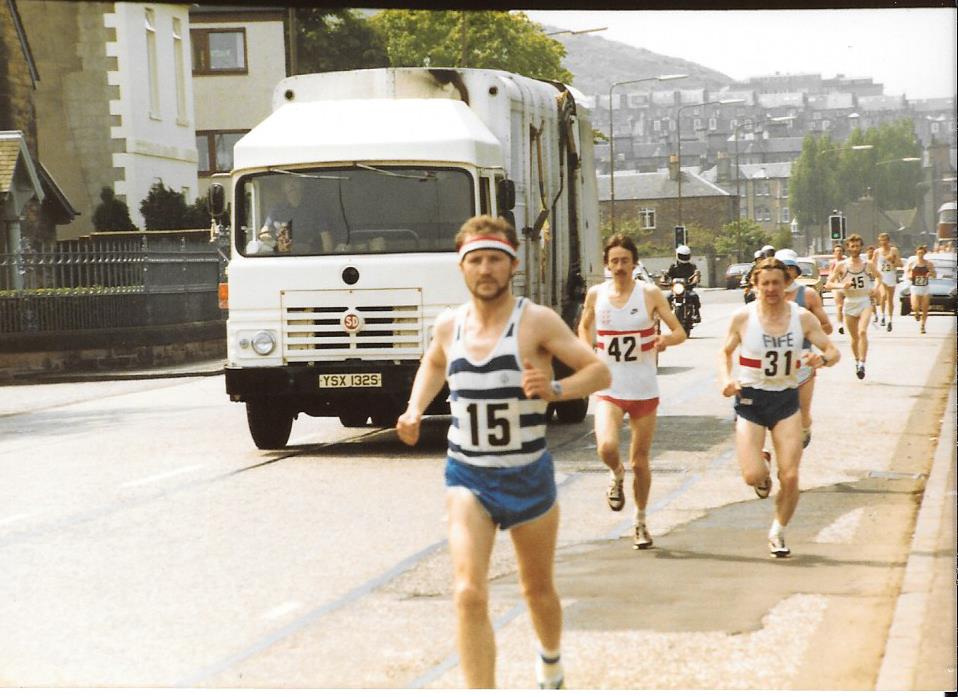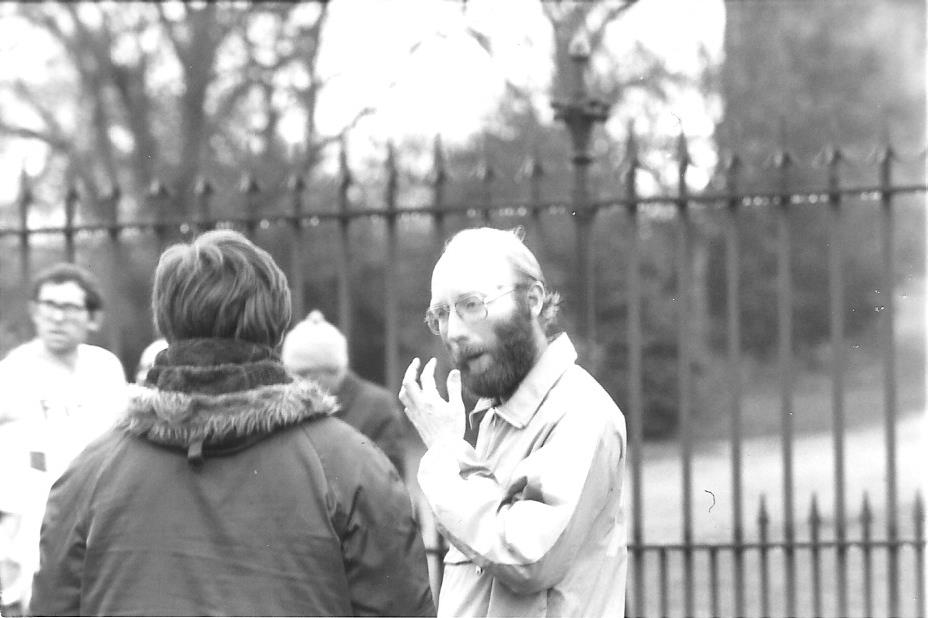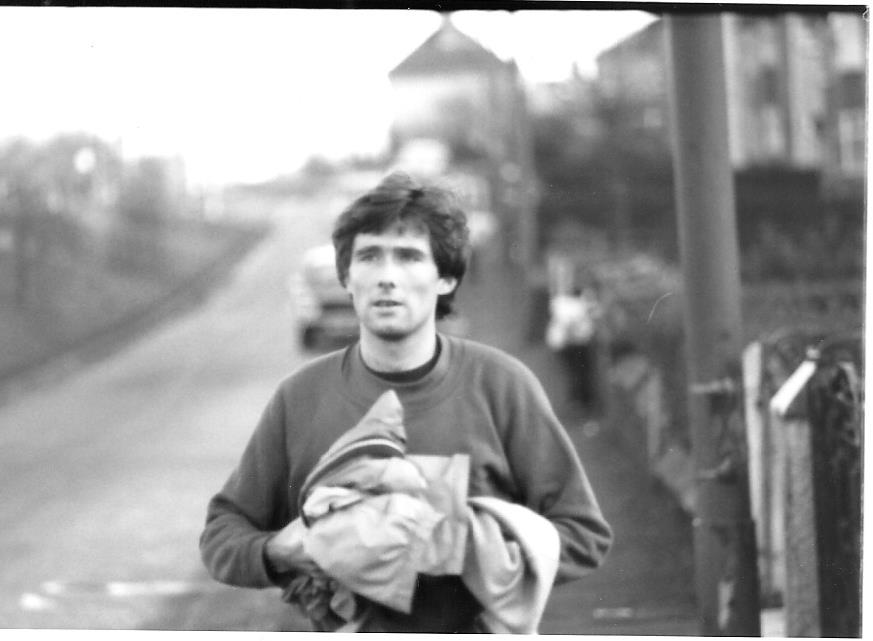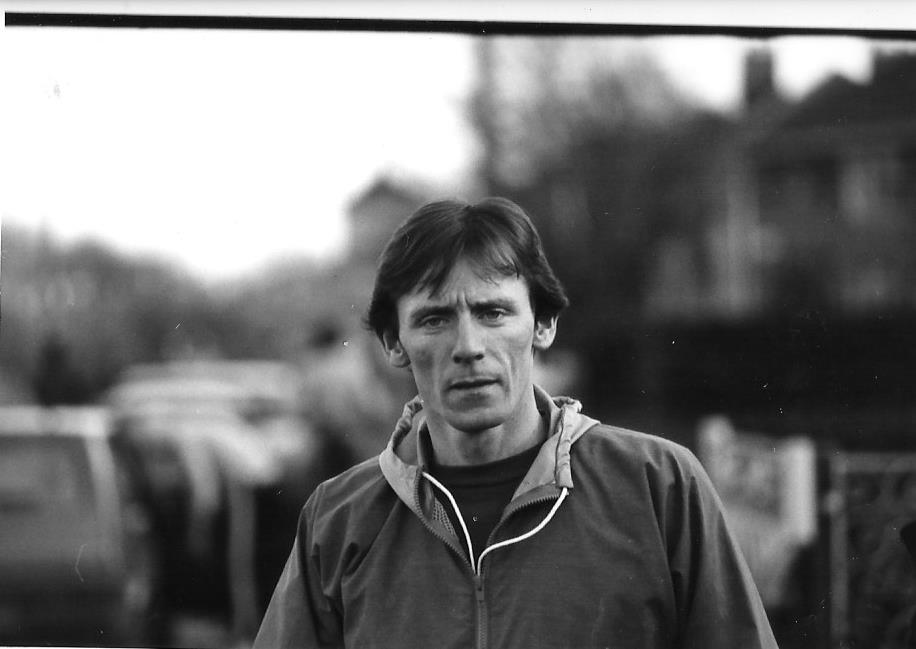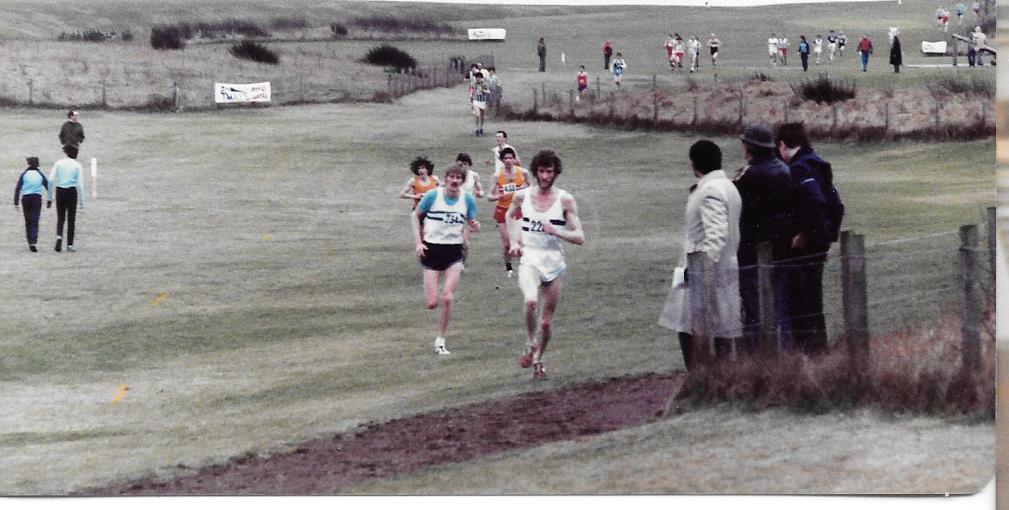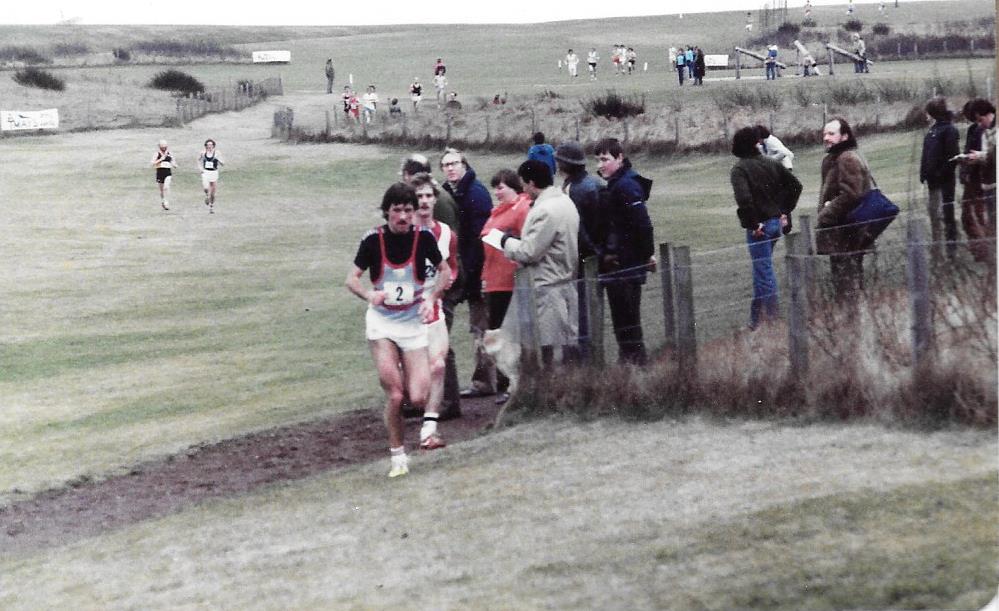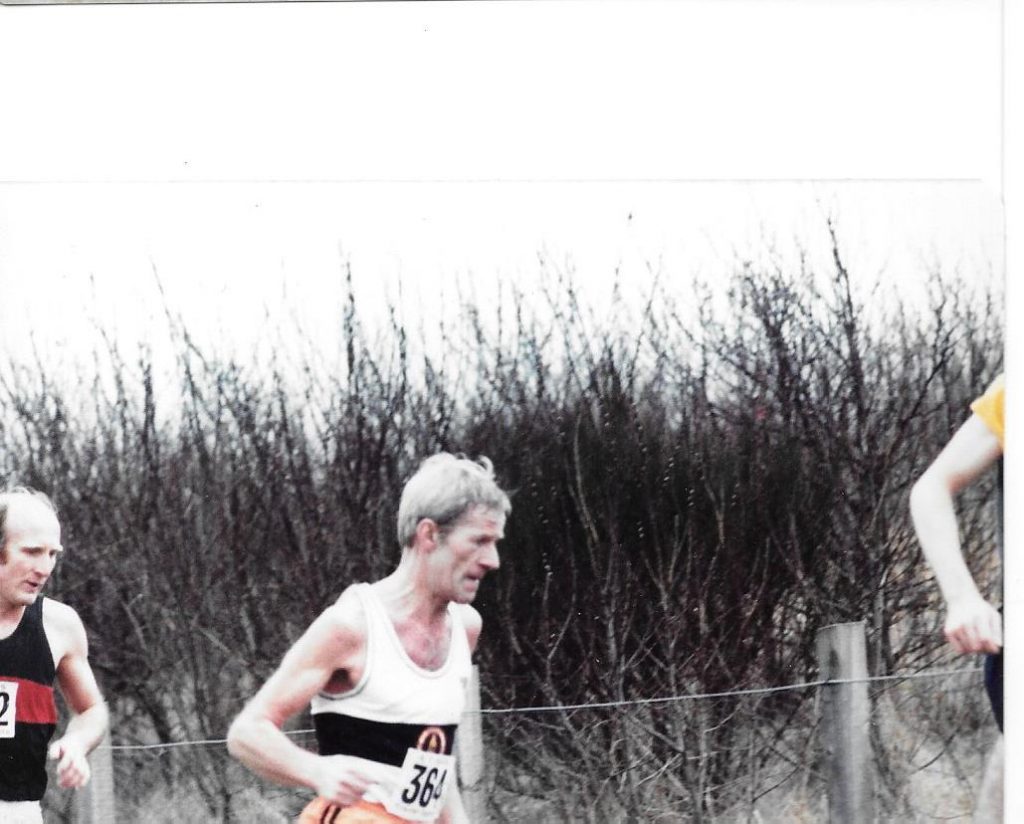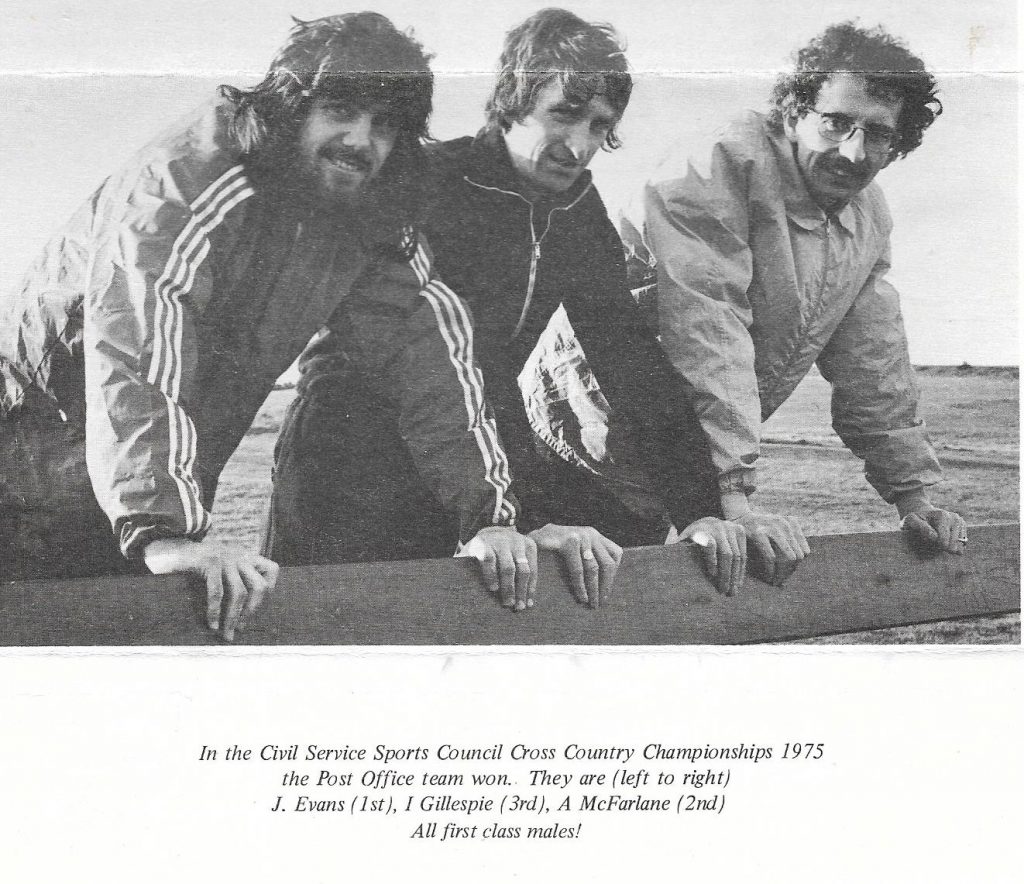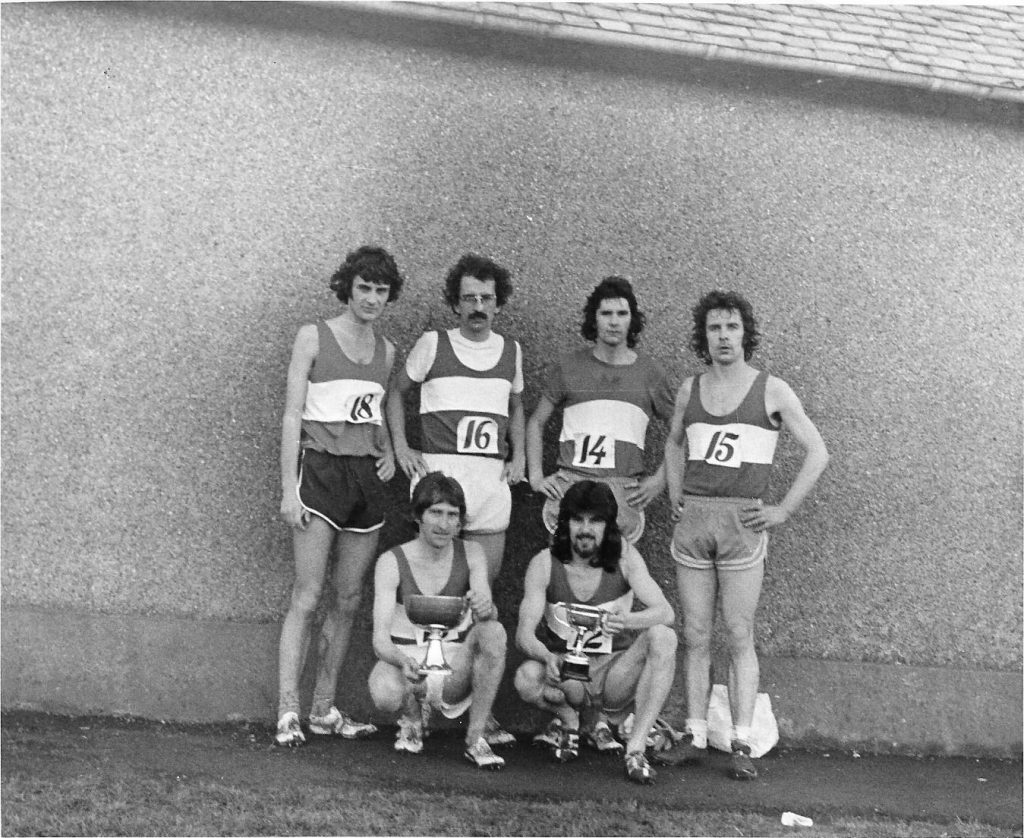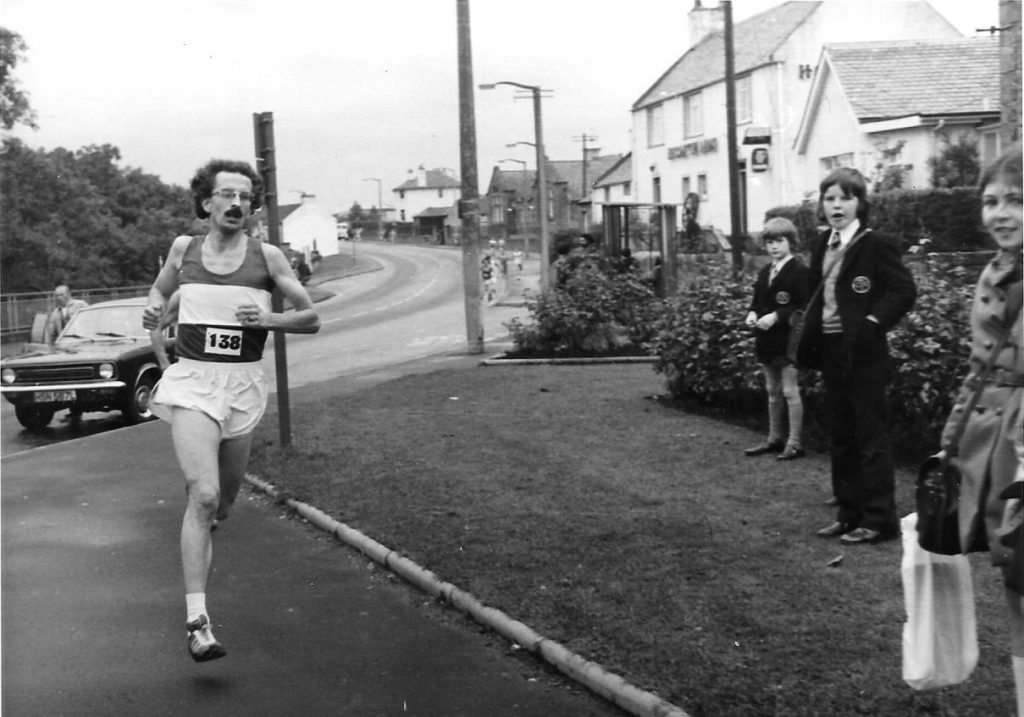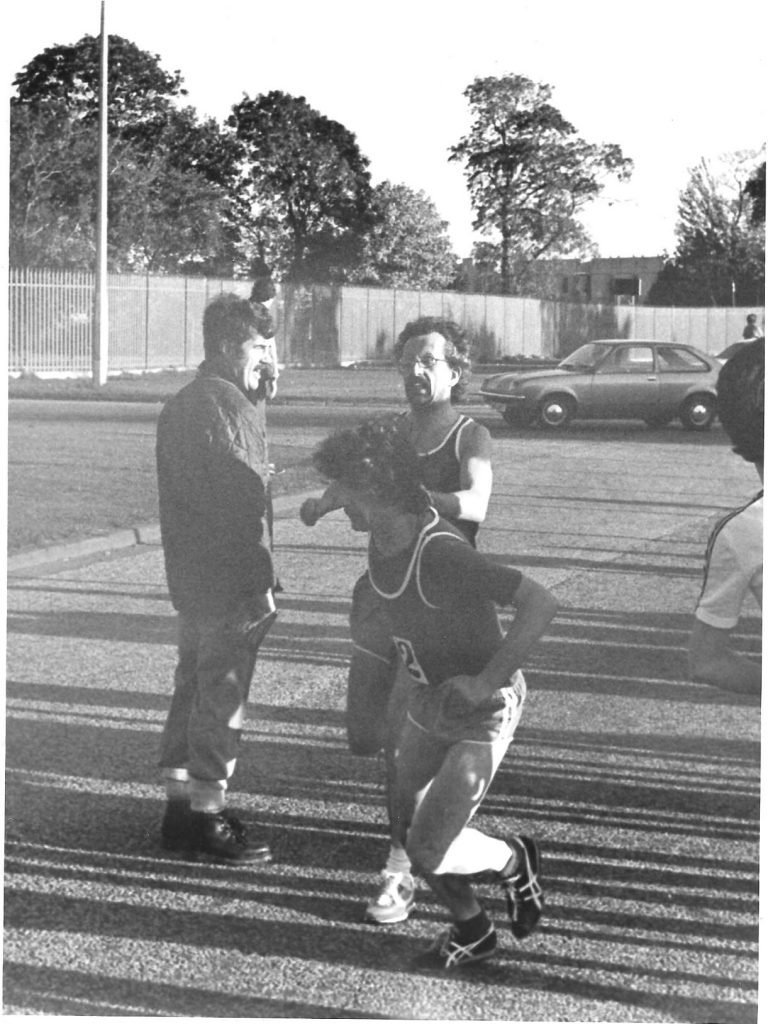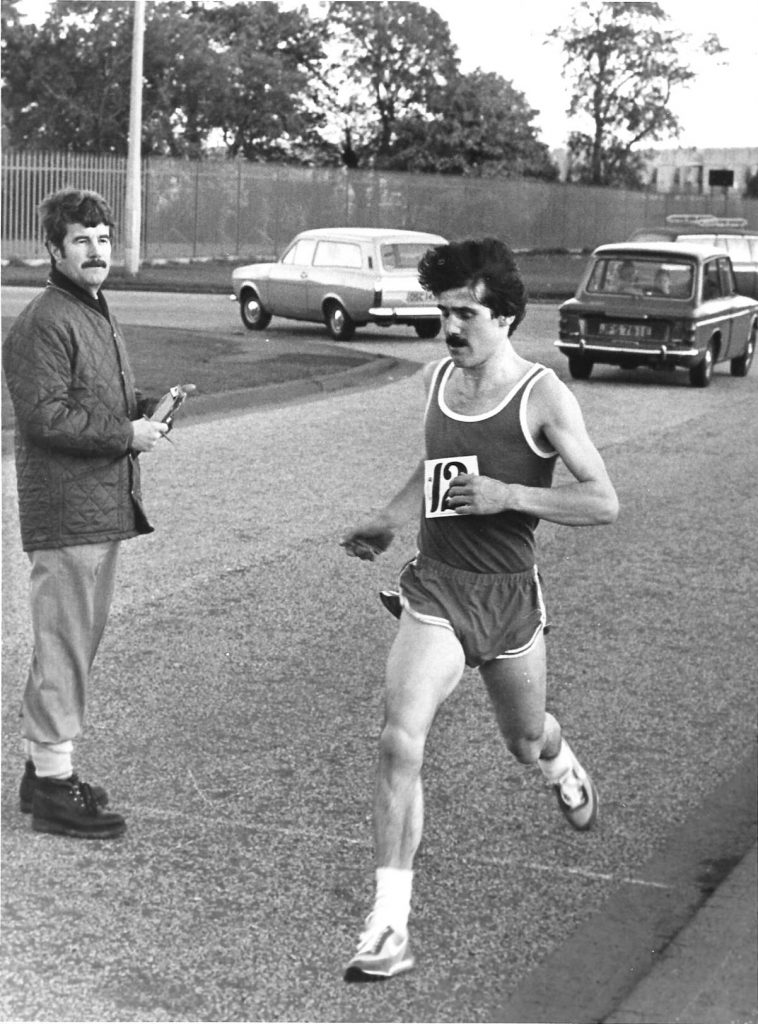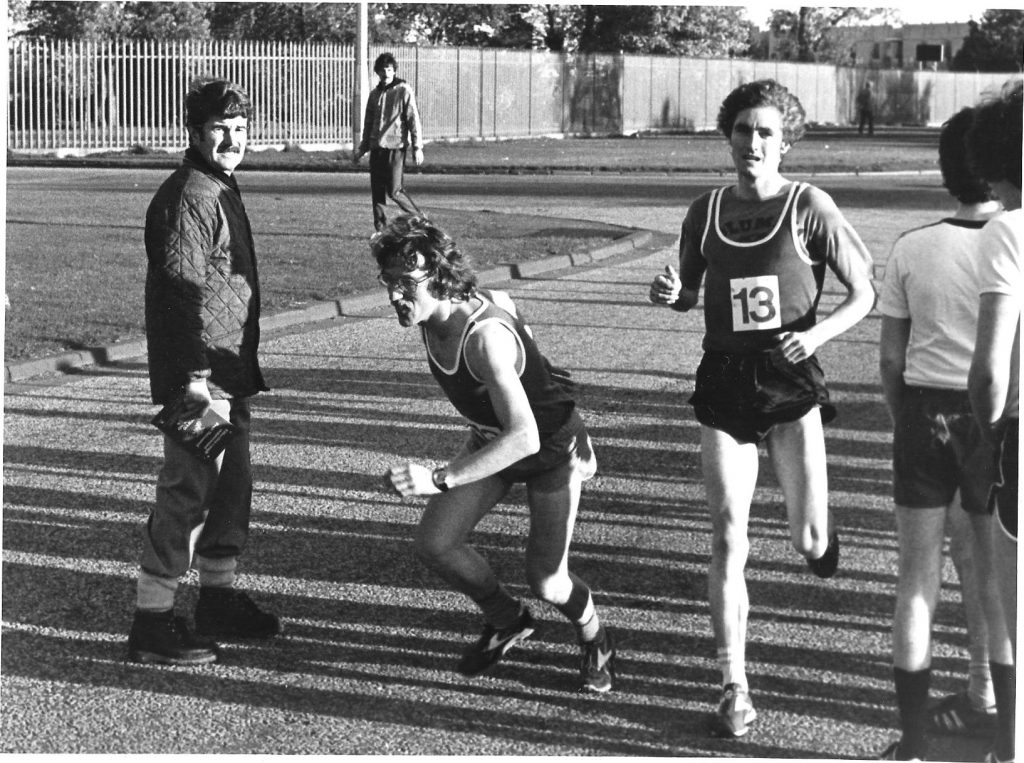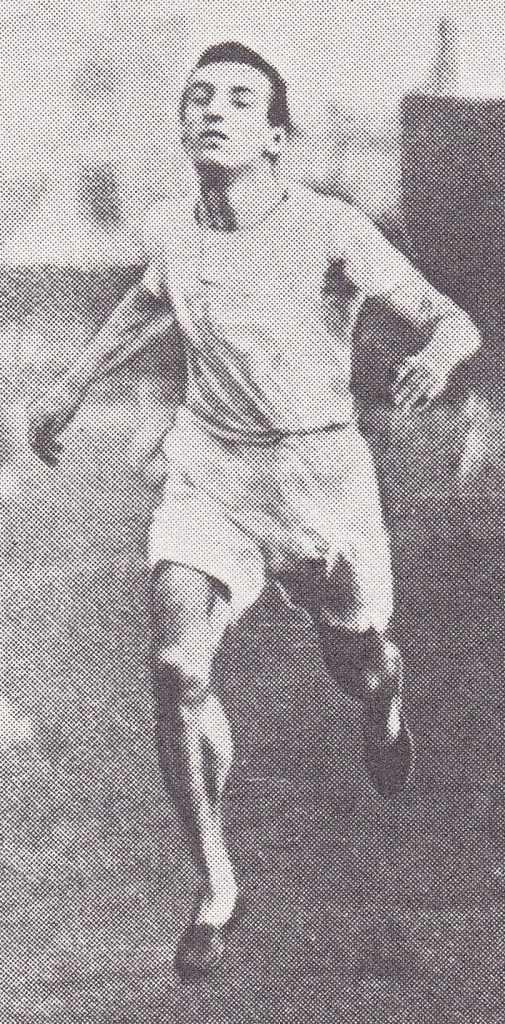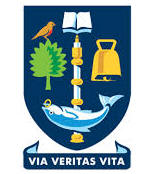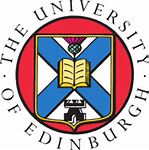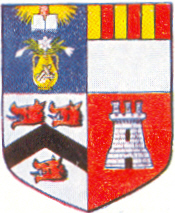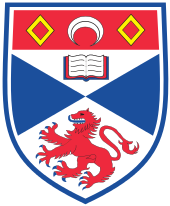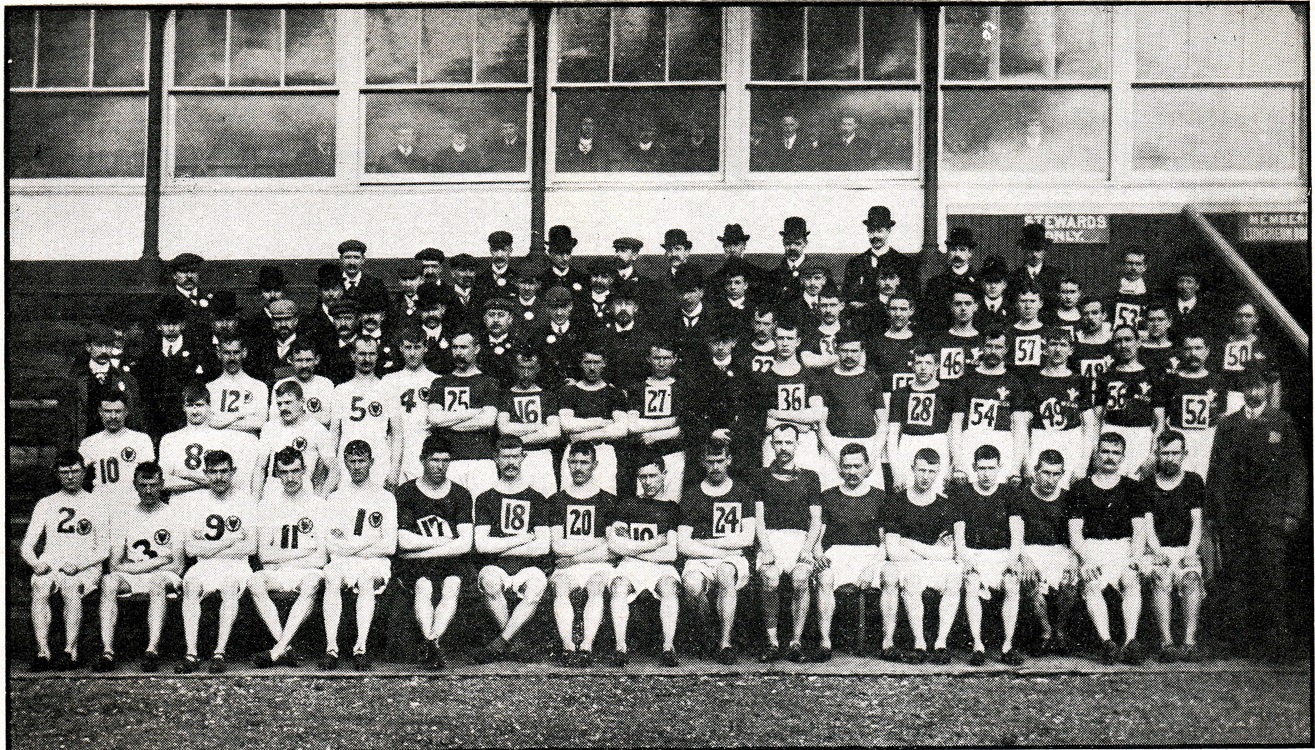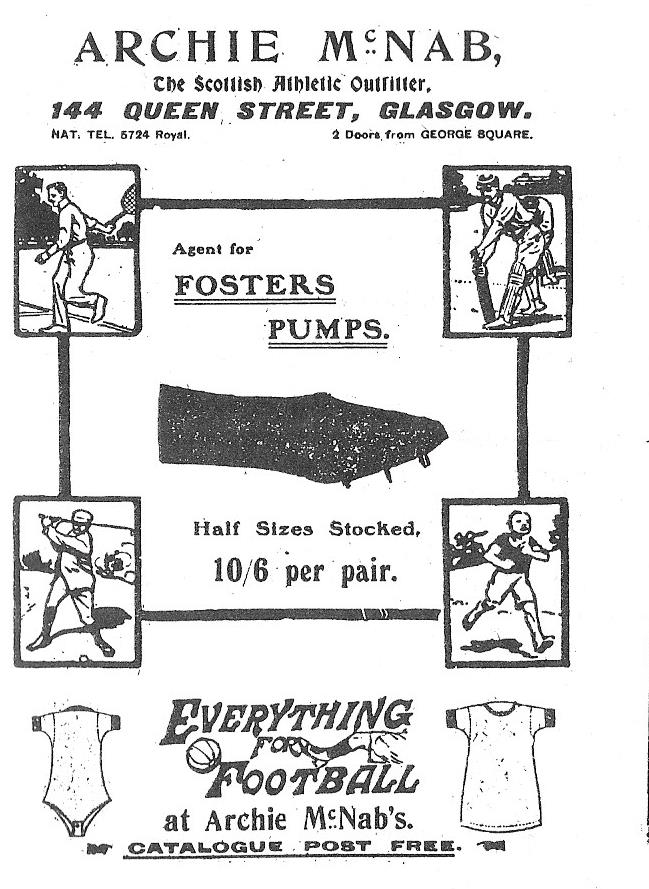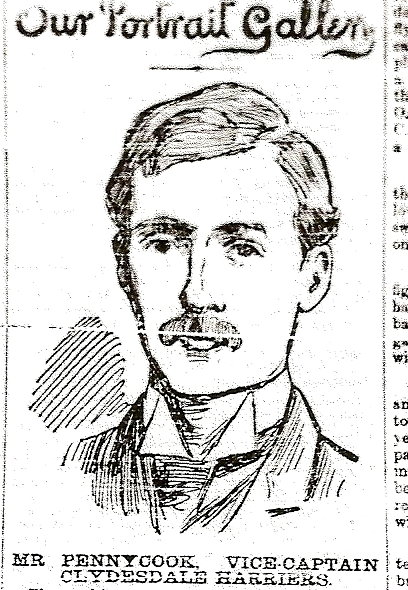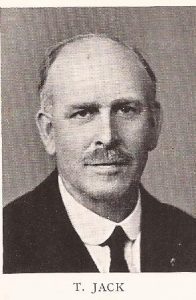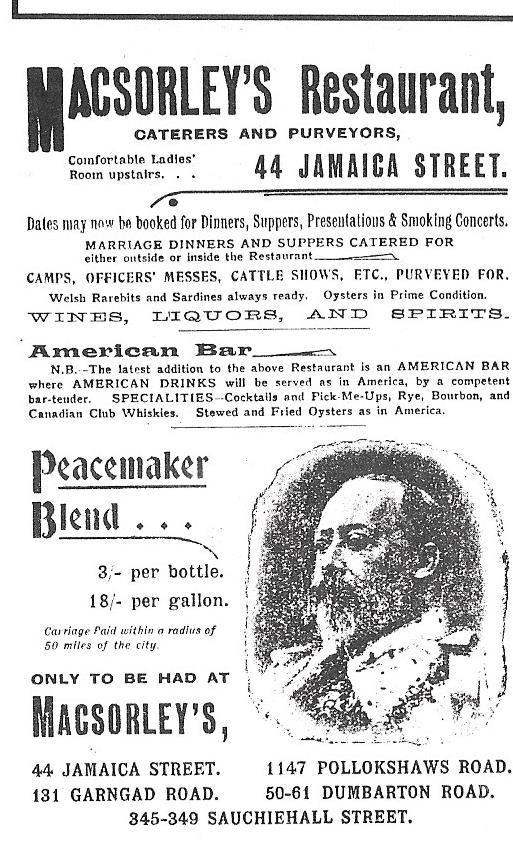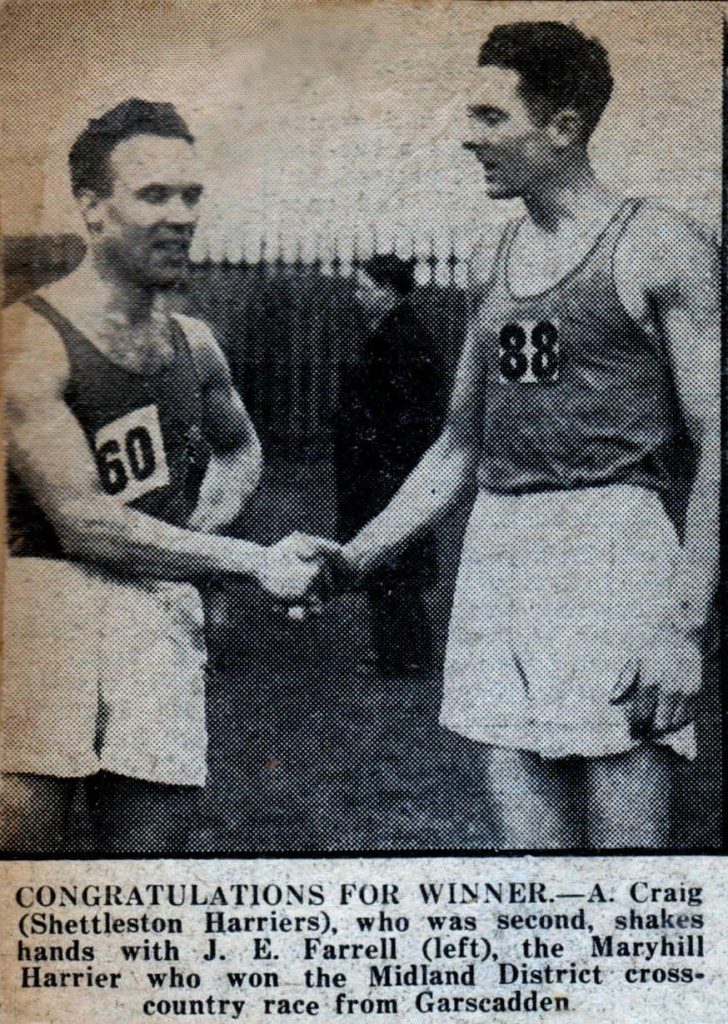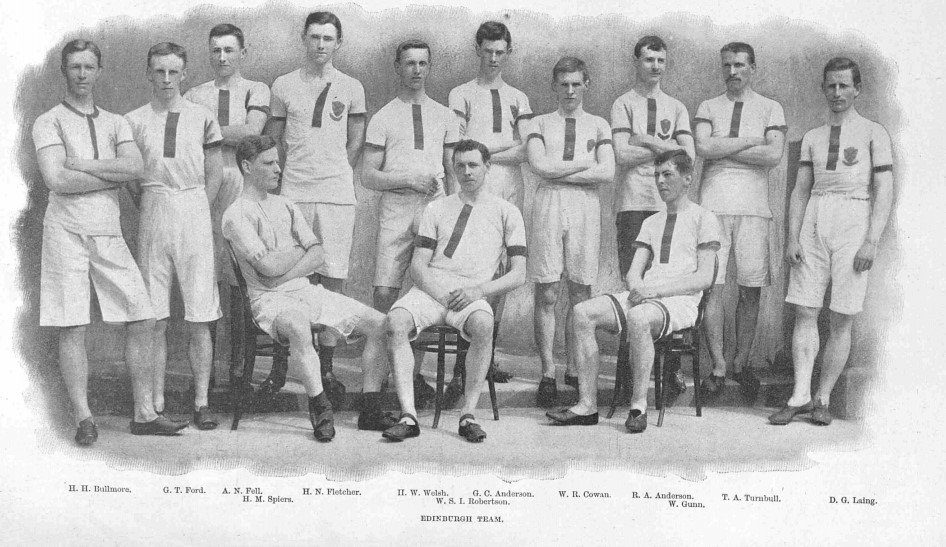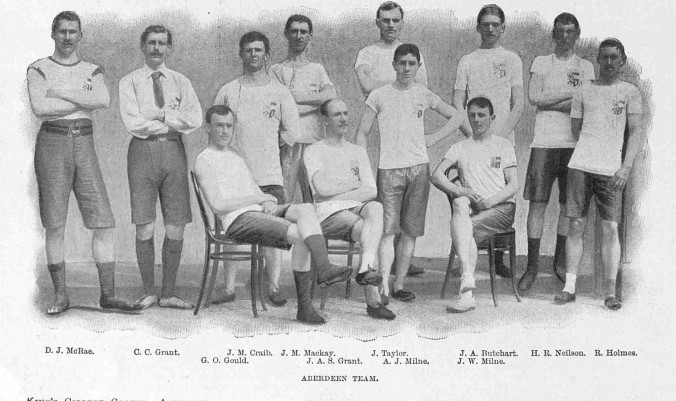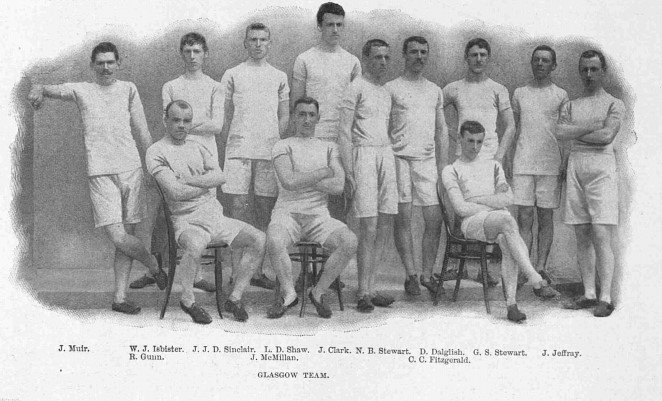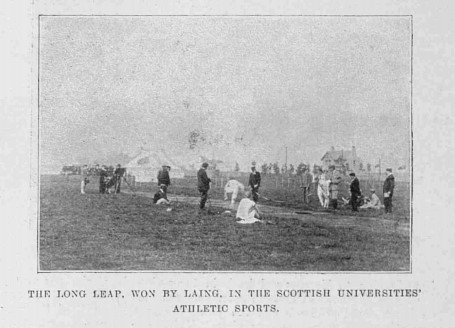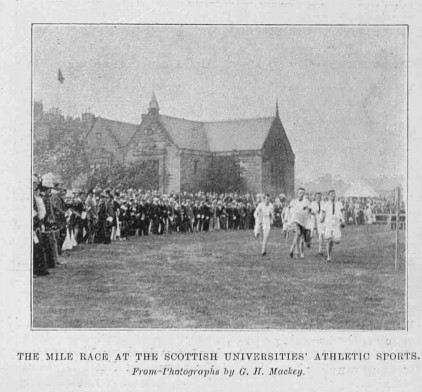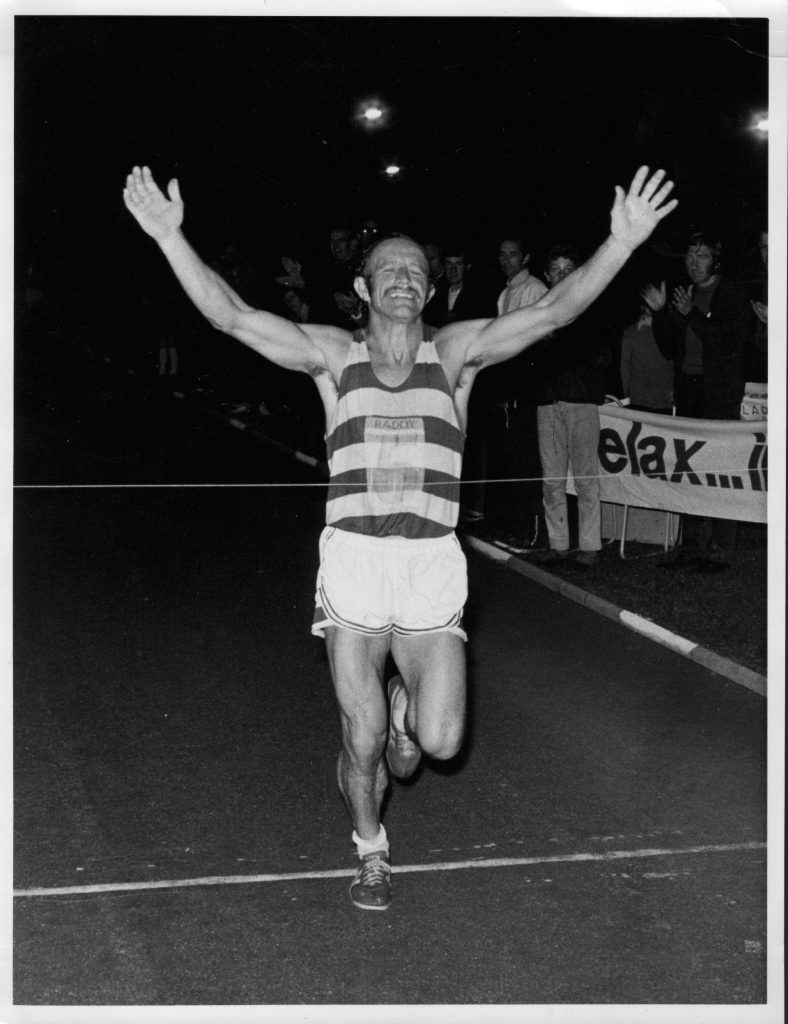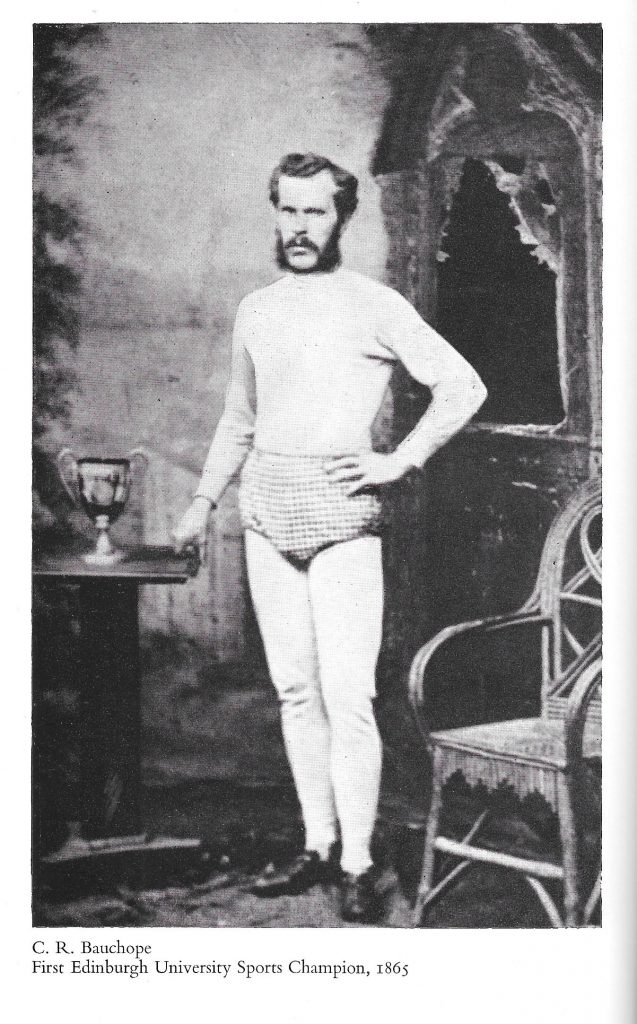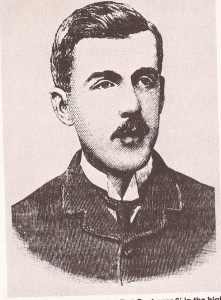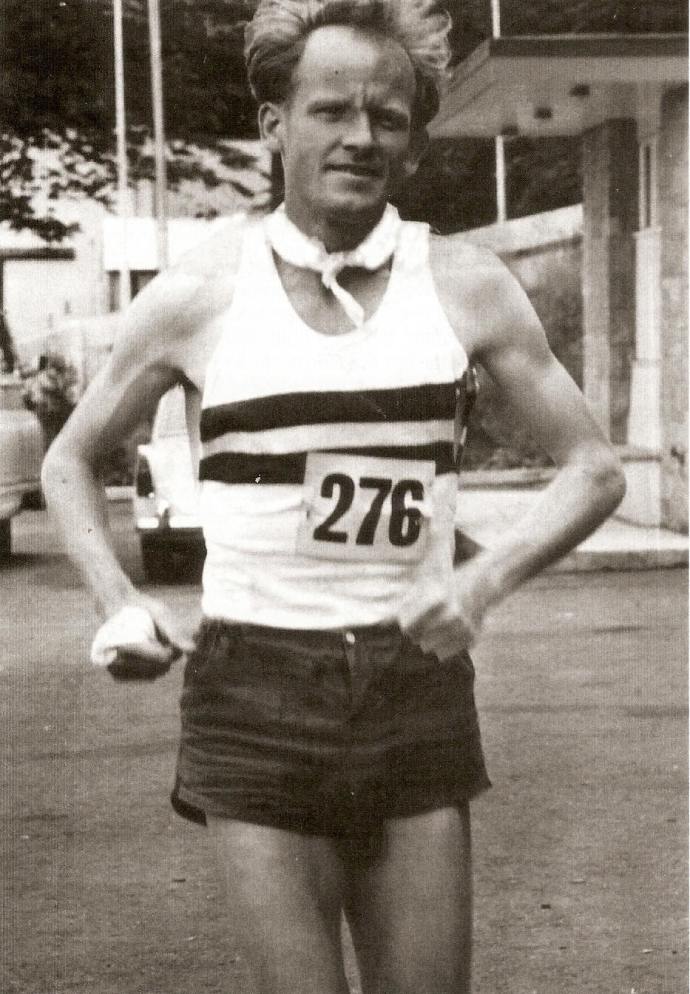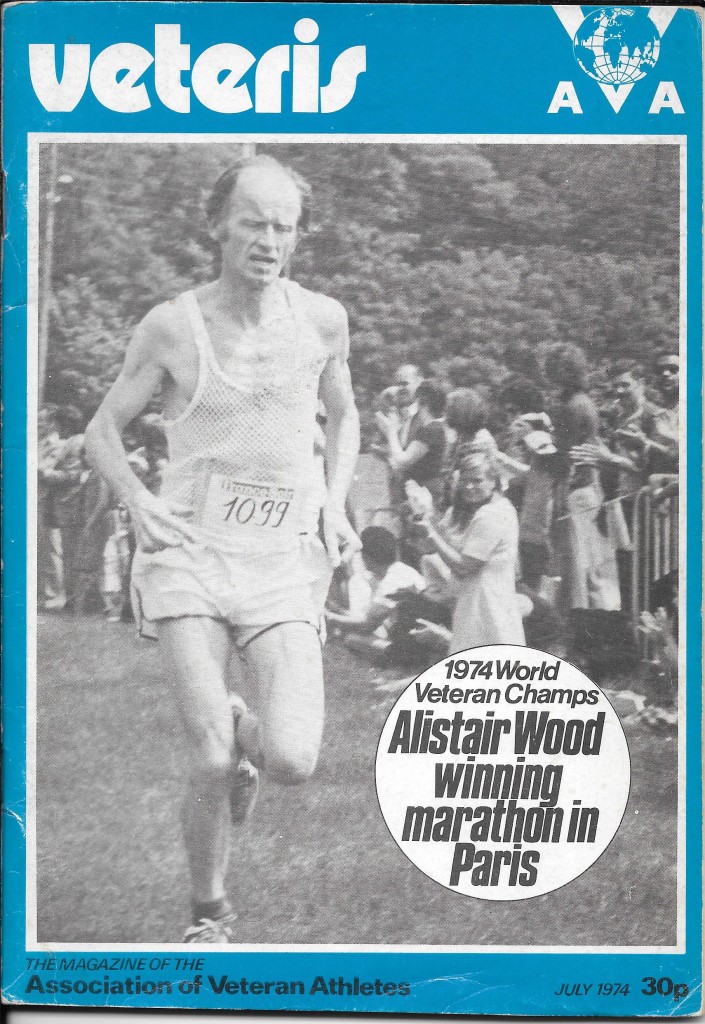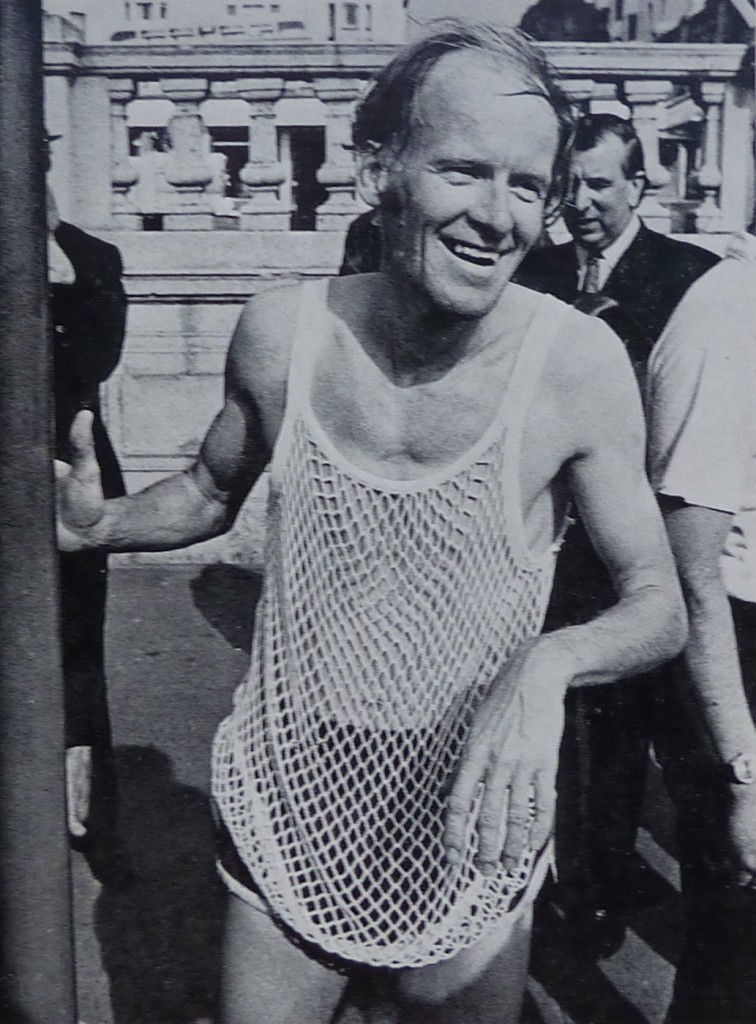Stan Horn leads Colin Martin at Strathallan
As an amateur athlete running in the 1960’s and 70’s, there were not that many Highland Games that I was able to run in if I were to retain my amateur status. The Strathallan Gathering at Bridge of Allan was one though and it was always a great day out. The meeting, on a dedicated Games Field, with a wonderful stand (now sadly gone), before a very good crowd with genuine personalities as Chieftain and with a fair in the adjacent field plus pony trotting after the Games had ended, was a real experience. I still go most years as a spectator but gone are the fireside rugs, cake stands and casserole sets as prizes and the money prizes are good enough to be worth competing for. As well as being easy for the Committee to organise and hand out, they are often most welcome to the athletes. One former international athlete still complains about winning two races at two meetings in consecutive weeks (neither was at Bridge of Allan) and getting a large canteen of cutlery “worth £40” for both. This was in the 1950’s when money was tight and he could have done with the money more than he needed two large canteens of cutlery, however magnificent.
The permanent trophies for the various events are a good reminder of who has won what – they even have specific trophies for the younger age groups such as the Bastable Trophy for Under 17’s which my own athletes have won three times. The following historical appreciation is from the meeting programme.
“The Strathallan meeting in its present form has held a central place in traditional Scottish sport for 150 years. Before that its origin can be found in the sports gatherings of ordinary country folk when the Lairds met to play at, “Tilting at the ring” under a charter granted by James I in 1453. A link to the old Wappenschaws, (a kind of medieval “Home Guard” when every grown man had to show his weapons in good order), is tenuous, but what is certain is that by the early 19th century competitive sports were taking place here on a regular basis. William Litt of Cumbria wrote in 1823 of “The famous old school of wrestlers in Strathallan, Stirlingshire”.
There is no record of when The Country Archery and Rifle Club was founded but it was probably about 1825 and it also held sports competitions at its meetings. Their competitions became the Strathallan Highland Games and were organised by JA Henderson of Westerton from at least 1848 until 1858 when he died. Major General Sir James Alexander, K.C.B., became Laird of Westerton in 1863 and reorganised the games which have been held annually ever since then with the exception of the duration of the two World Wars.
Strathallan’s committee has a unique claim to fame, it is intimately connected with the birth of the modern cult of Body-building. In 1888 it was responsible for organising the Highland Gathering at the Glasgow International Exhibition and in 1889 at the Paris International Exhibition. When the Strathallan Committee and the highland games stars they had brought to Paris for the Exhibition arrived, they found to their surprise that the world’s first Body-building competition was about to be held. The competition was to be a team competition and had already attracted an entry of 300 strongmen, but nothing daunted, the Scots led by the famous wrestler Jimmy Esson of Aberdeen, entered and won. Sadly Jimmy Esson died of his wounds in A German Prisoner of War camp in 1916.”
In 1999 the meeting reverted to its roots, until 1956 it was a traditional games with money prizes, then from 1957 till 1998 it affiliated to the amateur sports organisations. A new era demands a new start and in 1999, the year of the first Scottish Parliament for almost 300 years, we once again affiliated to the Scottish Games Association to continue to promote for the benefit of the coming generations, the old traditional Scottish sports, dances and music.”
The programme of athletics events has changed in two ways from the time when I ran there: like many Highland Games the numbers are smaller and that applies to the competitors as well as the spectators; and there are fewer events. The current (21st century) list includes:
90 meters flat race (handicap) – Open; 90 meters Strathallan Invitation Championship; 200 meters flat race (handicap) – Open; 400 meters flat race (handicap) – Open; 800 meters flat race (handicap) – Open; 1600 meters flat race (handicap) – Open; 3200 meters flat race (handicap) – Open; Triple jump – Open
Youths: Youth races are in two age groups – 10 to 12 years and 13 to 15 years; 90 meters flat race – Open; 200 meters flat race – Open’; 400 meters flat race – Handicap; 800 meters flat race – Handicap (Turnbull Trophy).
Compare this with the events at the meeting held on 1st August, 1970: 100 yards; 220 yards; 880 yards; Mile; 2 Miles; 21 miles road race; Long Jump; Triple Jump; High Jump. Women: 100 yards; 220 yards; 880 yards; High Jump; Long Jump.
Youths: 100 yards; 220 yards.
The switch from amateur to professional has meant that there are no team races at all, there had formerly been only two events for Youths (100 yards and 880 yards) against the four races x 2 of the present, and of course there is no road race. This is a pity. The famous Dunky Wright and the Scottish Marathon Club had encouraged the organisers to hold a 20 mile road race as part of a SMC programme of races leading the runners towards the twenty six mile + of the marathon. Part of the SMC four race championship it was well supported for many years with all of the very best in the country running there – Joe McGhee, Jim Dingwall, Donald Macgregor and all the rest came to Strathallan for the race. Entries fell and the distance was reduced twice before being removed from the programme. If we have a look at some of the meetings from 1956 – the last of the professional meetings before it became an amateur event.
In 1956, the last of the professional meetings, the meeting was held on 4th August and pride of place must go to the great Jay Scott (above) who won 5 events that afternoon – the long jump, the hop, step and leap, the high jump, putting the heavy ball and putting the light ball. Brother Tom won the pole vault. It is interesting to note the range of field events included: many more than was usual in the games on the circuit and when you add in the throwing the light hammer, throwing the heavy hammer, throwing the weight over the bar and, of course, the caber, it was a quite remarkable programme. There were six foot-races and three cycle races as well as highland dancing to entertain the crowd. There were also a number of athletic events confined to local people – 100 yards, 220 yards, throwing the hammer, putting the ball, high jump, hop, step & leap and pole vault.
If we compare that with what was on offer the following year – the 106th Games and the first amateur version – we only have two throws, the hammer and the javelin, compared with the seven of the previous year. The latter being a very dangerous event on a crowded infield is very seldom seen at local sports or highland gatherings. There was still the four jumps events but the track had many more competitions. There was Men’s 100 yards, Junior 100 yards, Youths 100 yards, Women’s 100 yards, Men’s 220 yards, Youths 220 yards, Women’s 220 yards, 880 yards, Junior 880 yards, Mile, 20 miles road race, Medley Relay, Junior Relay and Women’s relay. There are differences in number of events and type of events. Particularly notable is the lack of traditional Games heavy events like the caber and weights over of the bar while the introduction of the javelin was maybe made by administrators unaware of the nature of the Games.
It was an attractive meeting for amateur athletes and many came along to see what this new meeting had to offer, among them many ‘star’ athletes such as Graham Stark, Charlie McAlinden, Jackie Foster, John Freebairn (before he became a pro), Fraser Riach and Doris Tyndall. It was to retain its popularity with the road race being promoted all summer long by, and organised by, the Scottish Marathon Club.
The following year, the programme was changed again. Events this time included 100 yards men, 100 yards women, 220 yards men, 220 yards women, 880 yards men, 880 yards women, One mile, 100 yards hurdles, high jump men, high jump women, long jump, hop, step & jump, pole vault, two mile relay, medley relay, inter-club relay women, 20 miles road race. Throwing 16 lb hammer, putting the weight, tossing the caber, throwing the 28 lb weight + wrestling, highland dancing and cycle racing. Note the throwing events – four instead of two, the javelin nowhere to be seen and more traditional events included. As a side note – on the same day Jay Scott was winning 4 events at Caol Meeting (100 yards, high jump, long jump, tossing the caber) and two seconds (hop step & jump, putting the ball).
It is still a good meeting, still well attended it is popular with lots of local sponsors but is now, like all the others, a professional event although there are fewer events than heretofore and will have a good future ahead of it. The road race while it lasted was popular with runners and useful for selectors and it was unfortunate that it passed. Maybe had the Scottish Marathon Club survived, the race would have too.
